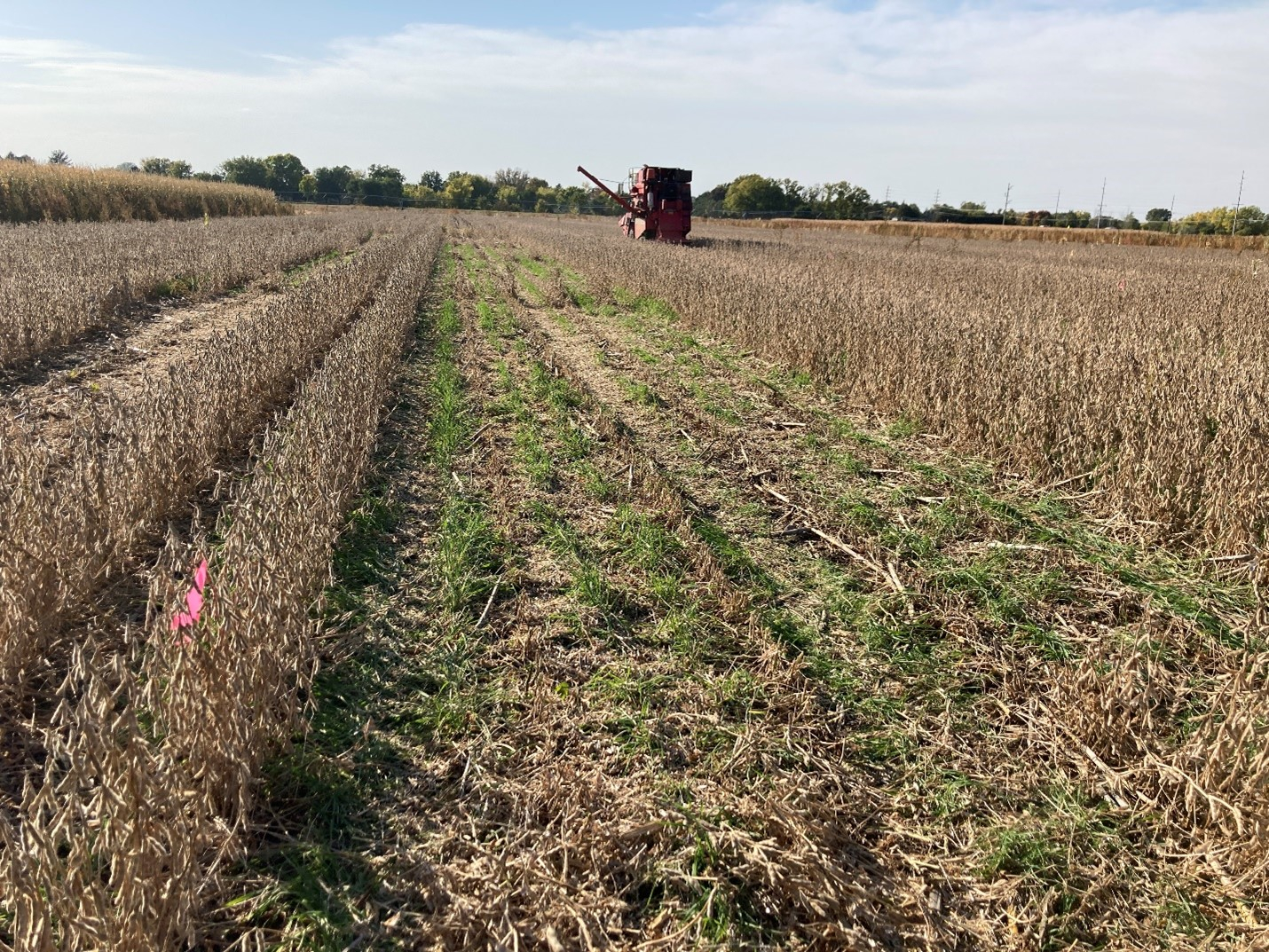Cropping Systems research at West Central Research, Extension and Education Center covers a mulititude of projects including nutrient dynamics and nutrient management as influenced by crop sequence and water availability/supply, and nutrient dynamics impact on yield and seed/grain quality. Long term goals include ensuring the economic and environmental viability of irrigated and rain-fed cropping systems with limited water in west central Nebraska. Research is being done at the Water Lab at Brule, Stumpf International Wheat Center at Grant and West Central Research, Extension and Education at North Platte.
Current research projects:
- On-farm Research towards the diagnosis of nitrogen (N) limitation in soybeans. The objective is to establish a method that allows in-season diagnosis of N status that can be used to better guide soybean producers concerning N fertilizer application. We conducted 23 and 18 on-farm trials across the state in 2021 and 2022, respectively. In addition to these experiments, other on-farm experiments, as per farmer request, are being conducted to test methods and amounts of possible fertilization practices. This project is funded by the Nebraska Soybean Board.
- Winter Pea Production as Influenced by Variety Winter-hardiness and Planting Date in Western Nebraska. This project aims to understand the best combinations of winter pea variety, planting date, and previous crop that would allow winter peas to survive NE winter and produce higher yield levels than spring peas in western NE. This project expects to provide the first guidelines for the possibility of extensively cultivating winter peas in West Central NE. Experiments are being conducted at Henry J. Stumpf International Wheat Center in Grant, NE. This project is funded by the Nebraska Dry Pea and Lentil Commission.
- Corn N dynamics as affected by the previous crop, its yield level, and the use of cover crop. This project pilot aims to understand how much N cover crops can give, if any, to the following corn crop and when that N will be available to the crop. There are three sets of experiments located at WCREEC. The first one is irrigated continuous corn with five N fertilization rates, and half of the plots are planted with cereal rye cover crop. The second one is an irrigated soybean-corn rotation in which soybean was planted on four different planting dates, and half of the plots were planted with cereal rye cover crop. The third one is dryland corn-fallow-wheat rotation in which five different types of cover crops (from cereals to legumes) are planted on wheat stubble plus a control plot with no cover crop. Assessments on corn plant N, and possibly soil water content, in the 2023 crop season will reveal some preliminary results. This pilot project is funded by a startup package from Agronomy and Horticulture department, Nebraska Extension, and WCREEC.
- Corn and cover crop water use and yield in irrigated cropping systems. This project pilot aims to understand cover crops’ mid to long-term effects on soil water availability in irrigated environments. Can cover crops help to build soil water holding and infiltration capacity to enhance cropping system resilience in irrigated with limited water systems? Two quarters sections of a pivot, one located at Henry J. Stumpf International Wheat Center Soybean and the other one at the Water Lab near Brule, NE, are planted with rye cover crop after soybean in 40ft wide strips. Assessments on soil water content and corn yield in the 2023 crop season will reveal some preliminary results. It is expected that the same areas will be continuously cultivated with cover crops in a period of 3-5 years to gather mid to long-term data and use these large plots for hands-on demonstrations. This pilot project is funded by a startup package from Agronomy and Horticulture department, Nebraska Extension, and WCREEC.
